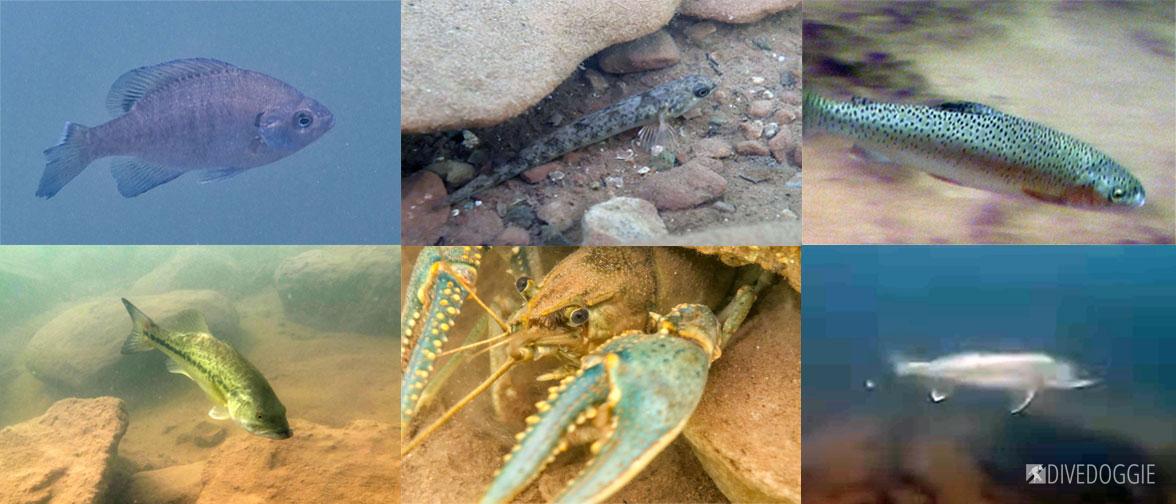Lake diving can offer a similar experience to ocean diving, if you treat it with the same amount of enthusiasm. In the ocean, there are amazing things to see everywhere you look – the same goes from lake diving. The more you dive, the better you get, and learning about fish will help you find them. It requires skill, patience and knowledge.
Look! A Fish!
The first thing we expect to see when diving is of course, the fish. In the ocean, fish are “everywhere” and easy to spot with clear visibility. But lakes are a little more difficult with lower visibility and more skittish fish. Freshwater fish tend to be just a little more cautious of divers entering their space, and keep their distance. Fish also have features to sense their environment a little better than divers:
- Round lenses in their eyes are built for water – round lenses bend light, giving fish greater peripheral vision.
- Dense lenses allow light to be focused on the retina, allowing better focus in “foggy” (low vis) conditions.
- The lateral line allows fish to feel pressure and movement in the water.
- Nostrils allow fish to smell their food and also warn them of danger.
How Can I See More Fish?
Bottom line: stop moving.
Slow down, stop moving excessively, stop finning and put your hands in your pocket. Do not chase them, feed them, touch them or put selfie sticks in their face. You also need to stop coming at them quickly or with sudden movements. Fish will eventually come to you, swimming past you and the more you seem less threatening to them, the more likely you are to get a better glimpse of the fish. Or, wait and move in slowly and see how close you can get to a fish.
How can I see the fish longer?
Avoid getting into the space of the fish. How far is too far? You can tell easily as the fish gives you fair warning that they feel unsafe: They’ll start to raise their fins, move their barbels or simply swim away. Change your body position if possible and avoid putting yourself into a “hunting” position – stiff, pointed and ready to attack. Curve your body more, look around the fish, rather than directly at it. Also, swim around the fish, not directly at the fish.
What Kind of Freshwater Fish Can I See?
In Colorado, the basic freshwater species you are likely to see are as follows:
- Bluegill (and other Sunfish)
These are the most curious fish and they will often check you out and may even follow you around. - Small Mouth Bass
During the spring months, SMBs will hang around a certain area while nesting and keep a close eye on you while they protect their nest. - Walleye
More skittish, they are also curious and will stalk you from behind, usually in slightly deeper water. - Sauger
Similar to Walleye, but can also be found sitting on the bottom of the lake, waiting to see if they can trust you. - Trout
Trout can be a little squirrely – darting around and usually bumping into you by accident, rather than out of curiosity. If you see a trout in a lake, it’s usually only for a split second. - Perch
Perch in Colorado are fairly small, reasonably skittish. If you can get close, it’s usually where they have ample protection with rocks or brush. - Catfish
More likely to be seen snorkeling in shallow water, usually under bushes or trees. - Carp
For a “trash fish”, these fish are built to survive (away from divers). They don’t trust you, they leave quickly, usually in a cloud of dust. - Crawdads / Crayfish
While not actually fish, these crustaceans can make any dive a little more enjoyable. Raise a claw and wave back.

